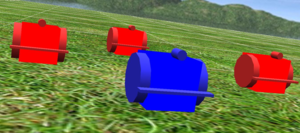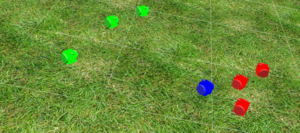Biomimetic behavior
Hunting superiority of wolves is the reason of their wide spread in the natural environment and their dominance in the food chain. This thesis is about the design of two biomimetic multi-robot systems that emulate the hunting behavior of gray wolves. The models were designed using Webots robotic simulator, while the hunting behaviors are based in the papers of Alfredo Weitzenfeld, Alberto Vallesa and Horacio Flores: " A Biologically-Inspired Wolf Pack Multiple Robot Hunting Model" and John D. Madden, Ronald C. Arkin and Daniel R. MacNulty: "Multi-robot System Based on Model of Wolf Hunting Behavior to Emulate Wolf and Elk Interactions". These papers demonstrate ethological studies of centuries on the structure, organization and hierarchy in the wolf pack.The first model encapsulates the notion that was established until recently, that there is a hierarchy in the wolf pack, division of labor and distribution of roles. In this architecture the multi-robot system is comprised of robots that simulate the behavior of wolves in nature and of robots that simulate the preys. In this architecture we distinguish two different roles during hunting, alpha and betas.The second model encapsulates the current notion of how grey wolves hunt, that wolves hunt without any hierarchy and coordination trying to maximize their own utility and the chance to captivate a prey. In this model we used robots that simulate independent wolves, and preys. Every robot is programmed to act upon sensory information acquired mostly from the RGB color type camera. Emitter and receiver are also used to accomplish the communication between the members of the pack. Touch sensor is also to avoid collisions.
Related publications
- Georgios Kondylakis, Biomimetic behaviour of robotic vehicles: the case of wolfs' hunting model, Diploma thesis in Greek, School of Production Engineering and Management, Technical University of Crete, Chania, Greece, 2016 pdf







